Pros
Cons
Introduction
Note: Along with the GY-HM650, JVC also announced the GY-HM600 camcorder, which is identical to its sibling model except it lacks the FTP and WiFi capability (as well as some of the associated recording options). Since the GY-HM650 models were limited on the show floor at NAB, we substituted some images in this review with photos of the GY-HM600 instead.
Lens & Imaging System
{{section_header}}{{section.name}}{{/section_header}}

The HM650 is equipped with an f/1.6 Fujinon lens with a 23x optical zoom. This is a fairly impressive lens for a camcorder in this price range, but you also have to keep in mind that this is the only lens you can get with the HM650 (this is not an interchangeable lens camera). Over the past year there have been a number of (relatively) cheap interchangeable lens camcorders—not to mention DSLR cameras that work great for video—to hit the market. Having a built-in lens does have its advantages, as it makes for a simpler all-inclusive product, but you should make sure the HM650's lens suits your needs before you settle on this camcorder.
Front
{{section_header}}{{section.name}}{{/section_header}}
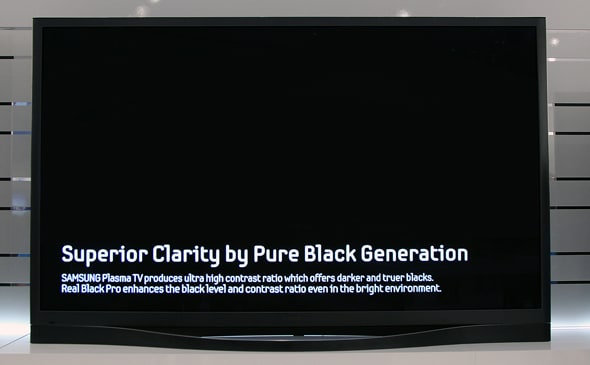
Right
{{section_header}}{{section.name}}{{/section_header}}
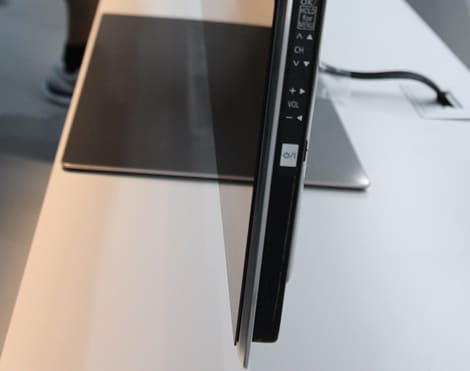
Back
{{section_header}}{{section.name}}{{/section_header}}
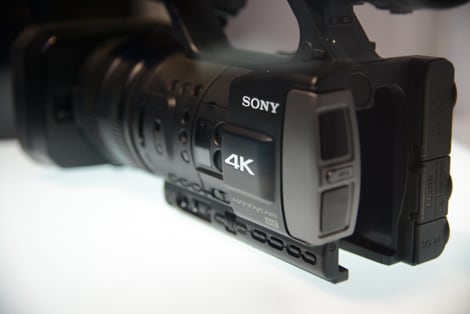
Left
{{section_header}}{{section.name}}{{/section_header}}
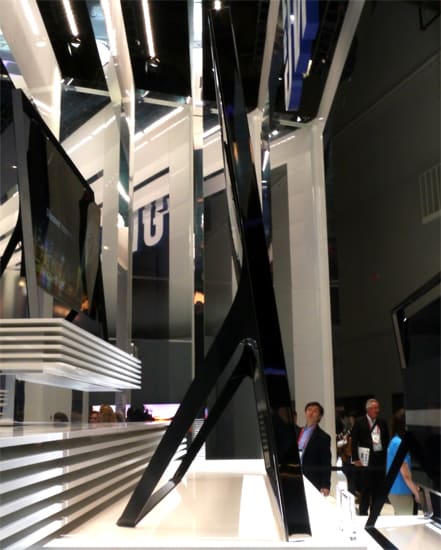
Compression
{{section_header}}{{section.name}}{{/section_header}}
JVC's focus for the GY-HM650 is to make the ultimate ENG news camcorder that can be used in the field. In order to accommodate for the widest variety of workflow solutions and post production setups, JVC opted to equip its new camcorder with two HD video recording codecs, standard definition recording capability, and the ability to save clips in four different file formats. This is a smart move for JVC, as it should make for less headaches if people upgrade to the HM650.
Before we get to the camcorder's multiple HD recording options, we should talk about the most interesting feature on the HM650. The camcorder is equipped with FTP and WiFi connectivity, which means you can send content back to the newsroom or editing station without connecting the HM650 to a computer. Additionally, the camcorder has the ability to create "1/4 HD" videos (470 x 280 resolution) that are easier to upload over WiFi, in case you don't have time to send the bulky Full HD videos. These smaller videos are recorded simultaneously during the recording of your regular HD video—Full HD to one memory card and the 1/4 HD video on the other. You can then upload these smaller clips for editing, and, with corresponding time code, you can match these cuts with the Full HD footage when it eventually reaches the post production station.
Read more about the advantages and disadvantages of different compression types.
Now lets get to the HM650's actual codec and file format options. The camcorder can record HD video using the MPEG-2 Long GOP codec (35, 25, or 19Mbps) or the consumer-oriented AVCHD compression system. The two codecs each offer a variety of record modes, with both including 1920 x 1080 Full HD recording, as well as 1280 x 720 modes. Unfortunately, the camcorder does not appear to include a 1080/60p record mode, but footage can be recorded at 60i, 30p, and 24p frame rates (PAL frame rates are also available). The standard definition codec is H.264, and it allows the camcorder to record 720 x 480 video with a 60i frame rate.
The variety of file formats that the GY-HM650 can record to is one of the camcorder's finest features. Videos can be saved as MOV files (Final Cut), MP4 files (XDCAM EX), or MTS files (AVCHD). This collection of file formats makes it easier to use the GY-HM650 across multiple editing setups. You can simply choose the compression system that fits best with your workflow. The camcorder can also save MXF files, which store metadata and file information that JVC believes will help with asset management and organization of your video clips.
Media
{{section_header}}{{section.name}}{{/section_header}}
There are two SD memory card slots on the GY-HM650, both of which work with SDHC and SDXC memory cards. As we stated above, you can use both card slots simultaneously if you want to record web-friendly 1/4 HD clips in conjunction with your regular HD footage. You can also opt to record HD and SD (720 x 480) footage simultaneously using the dual card setup instead.
Read more about the advantages and disadvantages of different media types.

Auto Mode
{{section_header}}{{section.name}}{{/section_header}}
On the left side of the GY-HM650 you will find a "full auto" switch that enables the camcorder to work with entirely automated controls. It's likely that most users of a $5000+ camcorder will want to experiment with at least some manual controls, but it's good to see an auto mode switch as well. Sometimes you simply don't have time to set things up manually, especially with a product that is meant to be used on the fly in news gathering situations.

Zoom
Focus
{{section_header}}{{section.name}}{{/section_header}}
Shooting on the fly often requires the use of a quick autofocus system, and, from what we can tell, the GY-HM650 worked well on this front. We only saw the camcorder in action under exceptional studio lighting conditions, however, so the autofocus results may not be as pretty in low light situations.
Of course you can also manipulate focus manually on the camcorder using its large focus ring at the front of the lens. To make switching between manual and autofocus a quick process, JVC added a dedicated focus switcher on the left side of the camcorder. There's also an autofocus push button that engages the autfocus when you push it (and returns to manual focus when you release), as well as dedicated focus assist buttons on the side of the camcorder.
Exposure
{{section_header}}{{section.name}}{{/section_header}}
In addition to full-fledged aperture, shutter speed, and gain control, the GY-HM650 includes a three-position built-in neutral density filter. The ND filter is accessible via a large switch just behind the lens that offers options for 1/4, 1/16, or 1/64 reductions. The camcorder also has a button for bringing up zebra patterns to assist with exposure compensation.
Aperture
{{section_header}}{{section.name}}{{/section_header}}
The smallest of the HM650's lens rings is its aperture/iris control ring that is located near the base of the lens. This ring offers quick access to aperture adjustment and allows you to make sweeping changes with the simple rotation of your wrist. Just like the autofocus push button, the camcorder features an auto iris button that will immediately revert the camcorder to auto control when you press it.
Shutter Speed
{{section_header}}{{section.name}}{{/section_header}}
Shutter speed is the most annoying of the GY-HM650's manual controls in terms of how easy it is to adjust, but JVC still included buttons that enable shutter speed control on the fly possible. Closer to the back of the camcorder you'll find a shutter speed button that toggles manual control on and off. Above that you can set the shutter speed by pressing the VCR control buttons up and down. We don't like that these buttons "share" these controls, but it's not like you'll ever be using playback controls and changing shutter speeds at the same time.
White Balance
{{section_header}}{{section.name}}{{/section_header}}
On the left side of the GY-HM650, near the bottom of the camcorder, you'll find a dedicated white balance button with a white balance preset switch (with two options) next to it. This allows you to store two manual white balance settings (one for indoor, one for outdoor, for example) that you can switch between on the fly.
Gain
{{section_header}}{{section.name}}{{/section_header}}
The gain switch is setup in a similar manner to the white balance preset switch on the HM650. There are three preset gain settings: low, medium, and high (represented as L, M, and H respectively). You must go into the camcorder's menu system to specify what these preset gain levels are, and you can fine tune the gain settings a step further there. This switch is simply made to give you access to gain adjustments quickly—just like the white balance switch.
Other Manual Controls
{{section_header}}{{section.name}}{{/section_header}}
There are plenty of other manual controls on the HM650, but the camcorder we worked with on the show floor at NAB didn't have a working menu system. We couldn't dig deeply into the camcorder's vast control and feature set as a result, so we only got to see the main controls of the camcorder (which are pretty extensive in their own right).
Ease of Use
{{section_header}}{{section.name}}{{/section_header}}
Having a built-in lens definitely makes the GY-HM650 appear less daunting than a camcorder that works with a variety of different lenses. You don't have to worry about lens compatibility, specific lens accessories, or changing lenses for different shooting situations. You simply don't have to think about all that fun stuff. Instead, you can focus on using the camcorder's built-in 23x zoom lens, which should be fine for most shooting situations (especially documentary or news gathering). Yes, the built-in lens limits the camcorder's flexibility, but it also keeps you from spending extra cash on expensive new lenses.
The HM650's ability to upload video content via FTP using its WiFi connectivity is, in our opinion, the most intriguing aspect of the camcorder. We didn't get to see the process in action at NAB, however, so we can't report how smoothly the upload process actually works. If the camcorder can easily upload video content without the aid of a computer, this may end up being a strong selling point for JVC. We currently don't have much faith in WiFi-enabled camcorders, though, as we haven't really seen this process work effectively in the consumer market at this point. Maybe JVC's pro division designed the system better, and, if so, this feature could certainly make the HM650's video sharing process much simpler.
Handling
{{section_header}}{{section.name}}{{/section_header}}
The built-in lens on the HM650 has three lens rings: one for focus, one for zoom, and one for aperture. Each lens ring is designed very well, and we found all of them worked smoothly and accurately when we used them to adjust settings. The HM650 we worked with was mounted to a tripod, so we didn't get a good feel for how well these rings would work in a handheld shooting situation, but they were easy to access and use with the HM650 mounted to a tripod.
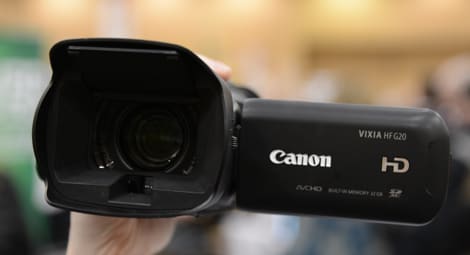
The dedicated buttons on the left side of the HM650 are plentiful, but the camcorder doesn't feel too cluttered. Buttons are very well labeled and only a few buttons serve dual purposes (like the VCR controls doubling as shutter speed adjustment). We're not won over by JVC's decision to put the VCR controls front-and-center on the left side of the camcorder. We'd rather have that important real estate be used for more important controls and settings. Maybe VCR controls are more important to others than they are to us, but we don't really see the need for them to be all that prominent.

The handlebar on the HM650 is useful for carrying the camcorder around, and it is outfitted with a few important controls like an extra zoom rocker. It's really not much different than your average pro-camcorder "handlebar", but it's still worth mentioning. JVC places its audio controls and XLR ports near the front of the camcorder, which means the audio controls are out of the way from the rest of your video settings on the left side of the camcorder.

Portability
{{section_header}}{{section.name}}{{/section_header}}
The GY-HM650 is small enough to hold in your hand—it doesn't require a shoulder mount—although a long day of shooting may be a huge pain without the aid of a tripod or some kind of support system. The camcorder weighs just over five pounds including its battery pack (2450g), which really isn't all that bad depending on what you're used to lugging around. An interchangeable lens camcorder, especially one with a large lens, will likely weigh significantly more. High-end prosumer camcorders, however, usually weigh just one or two pounds (with some weighing even less).
Battery
{{section_header}}{{section.name}}{{/section_header}}

LCD & Viewfinder
{{section_header}}{{section.name}}{{/section_header}}
The LCD on the JVC GY-HM650 has a 3.5-inch screen with a 920k pixel resolution. These numbers aren't bad, but they aren't anything more impressive than what we usually see on high-end consumer camcorders. Some flagship consumer camcorders have even better screens than this. Panasonic's HC-X900M, for example, has a 3.5-inch screen with a 1.152-megapixel resolution.

Although its LCD isn't anything special, the GY-HM650 does have an impressive (and comfortable) electronic viewfinder. We liked the provided eye cup on the viewfinder, and the 1.22-megapixel display on the EVF offered crisp detail and made focus and exposure adjustments easy to perform.


Audio Features
{{section_header}}{{section.name}}{{/section_header}}
If you don't have time to connect your external microphone, JVC's onboard mic on the HM650 should get you through in a pinch. The onborad mic records LPCM 2ch audio when using the MPEG-2 or H.264 record modes, or it records using AC3 compression in AVCHD mode.
If you have the time to get your audio connections settled, the GY-HM650 should have enough ports and features to keep you satisfied. There's a 3.5mm headphone jack, two XLR inputs (with phantom power), a 3.5mm external mic jack, and a shotgun mic holder. The shotgun mic shown in some of the photos throughout this review does not come with the HM650, but it's a cinch to attach one to the camcorder (just slip it into the mic holder and connect it via XLR).
One thing we didn't like was the fact that all the HM650's audio controls are concealed by the LCD panel when it is closed. This means you have to open the LCD to get access to audio features (like input switches and level adjustment). It's not a big deal, as you can still use the EVF even with the LCD panel open, but it's still a noteworthy nuisance.

Connectivity
Conclusion
At CES earlier this year, JVC's 4K camcorder—the GY-HMQ10—was probably the most talked about camcorder at the entire show. At NAB, however, JVC hasn't been making quite as much noise. But the company's new GY-HM650 camcorder is definitely something worth talking about.
The camcorder's internal specs with its 3CMOS sensor array, 23x zoom lens, and f/11 sensitivity are certainly respectable, but it's the camcorder's built-in FTP and WiFi connectivity that have us intrigued. These features, along with the ability to record with two different HD codecs and a variety of file formats, make the GY-HM650 well-suited for mobile news gathering and on the fly production. We didn't get to see the FTP or WiFi functions in action, as the models on the show floor at NAB were still prototype units. But if the features work smoothly, then the JVC GY-HM650 could prove to be an excellent choice as an ENG camcorder—and it may eliminate the need for expensive satellite transmission systems or other pricey workflow solutions.
With an expected retail price of around $5695, the GY-HM650 is certainly geared towards professionals, but it is still priced rather competitively for the market. JVC's choice to go with a built-in lens on the camcorder in lieu of an interchangeable lens system will likely have its detractors, but there is something to be said about the simplicity of a built-in lens setup. The lack of an interchangeable lens also probably helped keep the HM650's price competitive.
If NAB has showed us anything this year, it's that the professional camcorder market is extremely competitive right now. 4K video is on the rise, everyone is using DSLRs to shoot b-roll, and interchangeable lens "digital cinema cameras" are all the rage. By focusing on workflow, JVC's decision to go in a bit of a different direction with the GY-HM650 is refreshing to see.
Photo Gallery
{{photo_gallery "FI Lens Image", "FI Front Image", "FI Right Image", "FI Back Image", "FI Left Image", "FI Left Open Image", "FI Top Image", "FI Bottom Image", "FI Media Image", "FI Easy Mode Image", "FI Zoom Image", "FI Zoom Image 2", "FI 3D Lens Image", "FI 3D Lens Image 2", "FI 3D Physical Controls", "FI 3D Physical Controls 2", "FI Handling Image", "FI Handling Image 2", "FI Handling Image 3", "FI Battery Image", "FI LCD Image", "FI Viewfinder Image", "FI Viewfinder Image 2", "FI Playback Image", "FI Mic Image", "FI Flash Image", "FI Photo Mode Image", "FI Ports Image 1", "FI Ports Image 2", "FI Ports Image 3", "FI Ports Image 4", "FI Ports Image 5", "FI Ports Image 6"}}
Specs
{{manufacturer_specs_table}}
Meet the tester
Jeremy is the video expert of our imaging team and Reviewed.com's head of video production. Originally from Pennsylvania and upstate NY, he graduated from Bard college with a degree in film and electronic media. He has been living and working in New England since 2005.
Checking our work.
Our team is here to help you buy the best stuff and love what you own. Our writers, editors, and experts obsess over the products we cover to make sure you're confident and satisfied. Have a different opinion about something we recommend? Email us and we'll compare notes.
Shoot us an email

